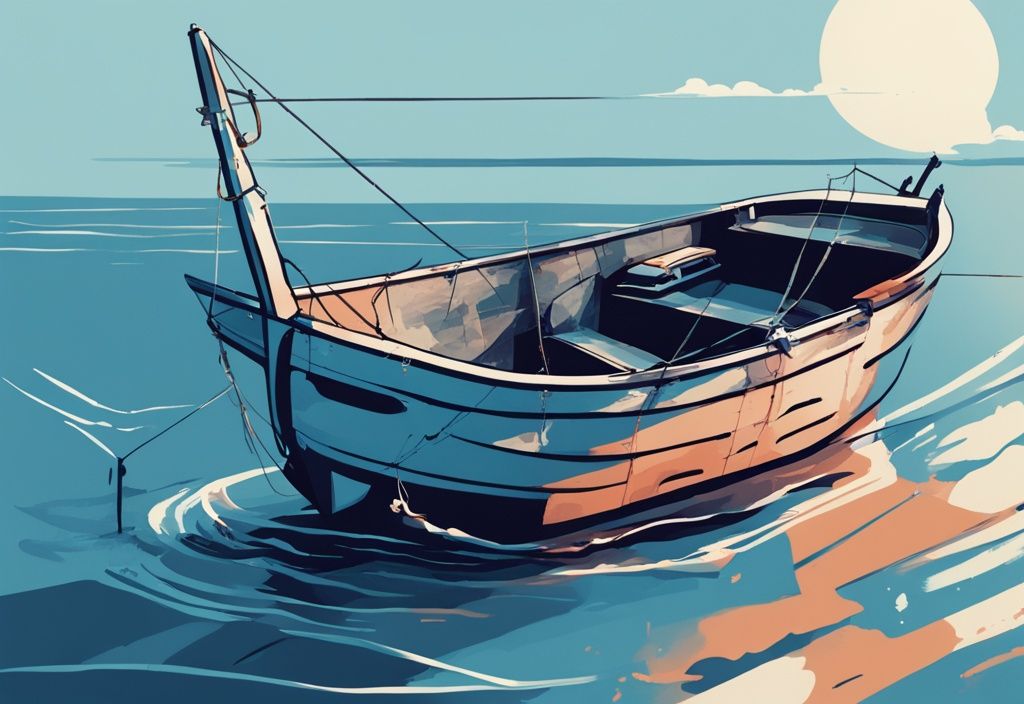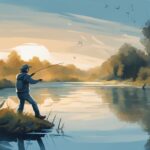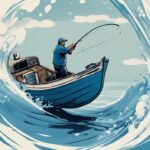Ever wondered why anchoring a fishing boat from the stern isn’t recommended? I’ll tell you why – because it’s dangerous. One wrong move, and your vessel could flood or even capsize! I’m Jake Marlin, and I’ve been fishing for more than 20 years. And trust me, you don’t want your boat flip-flopping like a freshly caught fish.
Fishing should be fun and safe, right? Well, you’re in luck! I’m here to shed some light on the major dangers of stern anchoring and more importantly, how to avoid them. By the end of this article, I promise you’ll have the inside scoop on keeping your boat steady, even in choppy waters.
So buckle up and let’s dive into the nitty-gritty. Why exactly is the stern a no-go-zone for anchoring? And what’s the alternative? Stick around, and all will be revealed. Your fishing outings will thank you!
Understanding the Basics: Stern and Bow of a Boat
The structure and function of a boat can be primarily understood by differentiating between the stern and the bow. The bow, positioned at the front or forward part of the vessel, is specifically designed to navigate through the water efficiently. Its streamlined shape allows it to cut through waves, reducing resistance and making the journey smoother. This part of the boat is essential in handling the force exerted by incoming waves, as it distributes the impact evenly and helps maintain balance and direction.
Conversely, the stern is located at the rear or aft part of the boat. This section is typically where the steering mechanisms and main propulsion systems, such as engines or outboard motors, are found. Unlike the robustly designed bow, the stern is often lower and can be more vulnerable to water ingress. This lower design can be practical for activities like boarding or accessing the water, but it also makes the stern susceptible to flooding, especially in rough conditions.
Understanding the roles of the bow and stern is crucial, particularly when considering anchoring practices. A common and significant danger of anchoring a fishing boat from the stern is the increased risk of swamping. The stern’s lower profile means that waves can more easily wash over it, leading to water intake. In such scenarios, the boat can rapidly become unstable and may even capsize if the situation is not managed promptly. Recognizing the stern’s vulnerability underlines the importance of careful anchoring to ensure the safety and stability of the vessel.
Imagine you’re out on the water, the sun warming your back, and a perfect fishing spot in sight. You’re eager to drop anchor and start casting. But wait—understanding the bow and stern could mean the difference between a successful trip and a precarious one.
The bow cuts through water, handling waves like a champ. Conversely, the stern houses your steering and propulsion but sits lower. This low profile is great for boarding and water access but makes it easy for waves to splash over.
Now, here’s the kicker. Anchoring from the stern brings the real risk of swamping. A swell could easily send water over the back, turning your boat into a bathtub. One big wave and you’re dealing with instability, or worse, capsizing.
Trust me, you don’t want to experience that panic. Anchor wisely, favoring the bow, and keep your fishing trips joyful and safe.
The Core Issue: Flooding Danger when Anchoring from Stern
Anchoring your fishing boat from the stern can lead to serious dangers, especially when the water gets rough. Let’s dive into why this happens and what makes this practice so risky.
The Swamping Process Explained
Understanding the major danger of anchoring a fishing boat from the stern is crucial for any angler. During rough conditions or high waves, water starts creeping into the boat from the stern. This part of the boat is lower, making it an easy target for incoming waves. Imagine the stern as a welcome mat for water—it’s lower and more open than the bow, allowing water to rush in much more freely. When you’re anchored with the stern pointing towards the waves, your boat fights a losing battle against the relentless force of the water. The situation magnifies quickly, making swamping almost inevitable.
The Aftermath of Flooding
Once water breaches the stern, things go south quickly. The extra water sloshing around shifts your boat’s weight, destabilizing it. Suddenly, your boat sits lower in the water; the added weight messes with its buoyancy. And here’s the kicker—the lower the boat sits, the easier it becomes for even more water to flood in.
It’s like a chain reaction. If you don’t handle the water problem fast, you’re looking at a potential sinking scenario. When you think about what is the major danger of anchoring a fishing boat from the stern, it becomes glaringly clear: poor water management can spell disaster. So, always remember to keep that stern high and dry to avoid a precarious situation!
Another Hitch: The Risk of Capsizing
An often overlooked yet crucial concern is the significant danger of anchoring a fishing boat from the stern. The subheadings below will delve into how waves and challenging conditions contribute to capsizing risks.
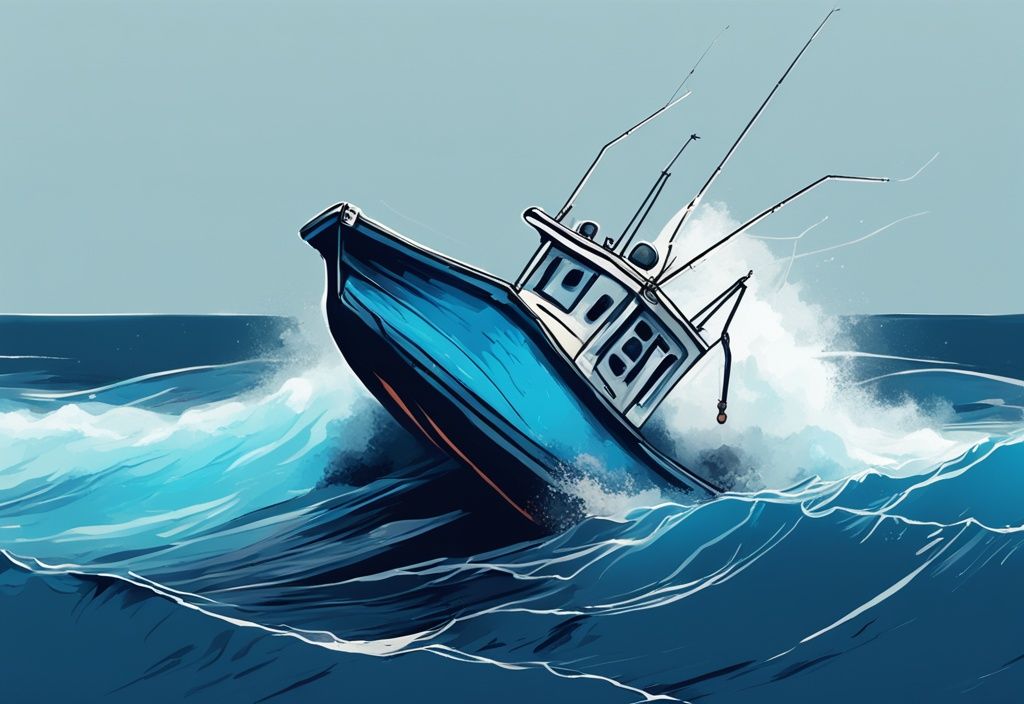
The Role of Waves in Capsizing
One of the major dangers of anchoring a fishing boat from the stern is the increased risk of capsizing due to wave impact. Imagine you’re out on the lake, feeling the gentle rock of the boat beneath you. Suddenly, waves start to grow, and you’re caught off guard.
When waves hit the boat from the side—a frequent scenario with stern anchoring—the chances of tipping over rise dramatically. Think about it: the bow is designed to slice through those waves like a knife through butter. On the flip side, the stern flings your boat broadside to the waves, exposing its flank and destabilizing the entire craft. It’s essentially inviting trouble by making the boat far more susceptible to capsizing.
Managing Boat Stability in Tough Conditions
In tough conditions, having your boat’s stern anchored can severely compromise stability. Have you ever tried riding a bike into a strong wind? If you face it head-on, you manage. But if you turn sideways, it’s a struggle to stay upright.
Stern anchoring similarly restricts a boat’s natural ability to align with wind and waves. Instead of facing the elements head-on as it does with bow anchoring, the boat is left vulnerable to side impacts. Suddenly, you find your boat swinging broadside to incoming waves, making it a veritable rollercoaster ride.
This lack of control is not just frustrating; it’s dangerous. The boat’s stability is thrown out the window, increasing the risk of capsizing significantly. Bow anchoring, on the other hand, lets the boat confront incoming challenges directly, distributing force more effectively and maintaining a much-needed balance. So, tie that anchor to the bow and keep your boat steady in the rough seas.
Handling the Boat: The Challenge of Direction Control
How Natural Elements Affect Boat Control
Let me paint a picture for you. Imagine you’re anchoring your fishing boat from the stern. The wind is catching your boat’s broadside, and the current is doing its best to swing you around like a weather vane. This is where things get tricky. You see, boats are designed to face the elements head-on with the bow. That natural alignment gets flipped on its head with stern anchoring, and suddenly, you’ve got an unruly vessel on your hands. It’s almost as if your boat develops a mind of its own, making direction control a complete nightmare. The boat’s stability takes a nosedive, transforming your serene fishing day into a chaotic dance with nature’s whims.
The Result of Unmanaged Movements
Now, let’s talk about what happens when these movements go unmanaged—spoiler alert, it’s not good. When waves start hitting your boat’s side directly, you’re playing a dangerous game. The broadside exposure significantly ups the ante, increasing the risk of capsizing. Waves can break over the sides, destabilizing the boat further. Picture this: rough waves, your vessel rocking violently, and you struggling to keep everything under control. It’s a recipe for disaster. In essence, anchoring from the stern creates a perilous situation, making it extremely challenging to maintain stability and direction. That, my friend, is the major danger of anchoring a fishing boat from the stern.
Technical Hassles when Anchoring from Stern
Why Proper Hardware Matters
Let me tell you, few things are as frustrating as trying to anchor from the stern when your boat isn’t built for it. Most boats out there just don’t come with the right gear for this job. Unlike bow anchoring, which has all the heavy-duty gear you’d expect, stern anchoring usually leaves you hanging without the proper winches, cleats, or fairleads.
And what happens when you don’t have the right tools? It’s a comedy of errors, except no one’s laughing. You might struggle to get that anchor to set properly, leading to it dragging along the bottom or just plain failing to hold the boat. Think tangled lines and a heck of a time trying to manage them—add to that the increased risk of hazardous situations.
Tangled Rudder and Damaged Propeller: The Unseen Risk
Here’s where things get hairy: the major danger of anchoring a fishing boat from the stern is the risk of entangling the rudder and propeller. With the stern so close to these critical components, the chances of lines getting snagged go through the roof.
Imagine this—your rudder gets tangled and suddenly you’re struggling to steer. Or picture a damaged propeller that renders your boat immobile. Both scenarios are a nightmare for maneuvering and controlling your boat, especially when you need to react swiftly in emergencies. This is even more treacherous in rough conditions, where the boat’s sudden movements can easily dislodge poorly secured lines, creating an almost certain safety hazard.
With all of this in mind, it’s clear why the right equipment and anchoring from the bow are critical for a smooth, hassle-free fishing experience. Stay safe out there, and keep that bow anchor at the ready.
Anchoring from Stern: Safety Concerns
The Possible Injuries
When anchoring from the stern, the major danger of anchoring a fishing boat from the stern involves the increased risk of injuries. The movement of equipment on an unstable boat can lead to accidents. As the stern is generally less equipped to handle the force of waves and wind, the boat can become more prone to sudden jerks and movements, making it difficult for passengers to maintain their balance.
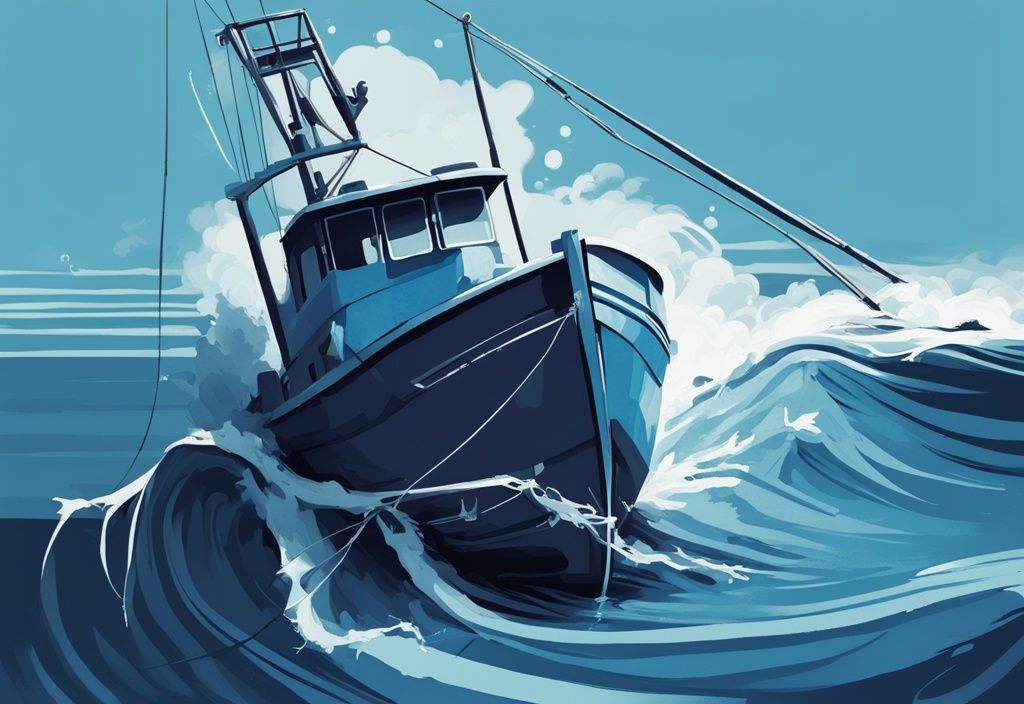
This unstable position not only hampers regular activities but also endangers passengers who might find themselves unexpectedly off-balance. The likelihood of falling or being thrown overboard is significantly higher, particularly in rough conditions or sudden squalls.
The Dreaded Seasickness and Risk of Falling Overboard
One of the major dangers of anchoring a fishing boat from the stern includes heightened seasickness due to increased side-to-side rocking. When the stern is anchored, the boat is less likely to face the waves bow-on, causing it to sway laterally with each wave.
This rocking motion can trigger severe seasickness, making the fishing trip uncomfortable and even hazardous for some passengers. Additionally, the unpredictable and uneven movements of the boat create a less secure environment, putting passengers at greater risk of falling overboard.
The lack of stability and consistent motion can lead to accidents, particularly if individuals are not prepared for the sudden shifts and rolls of the boat.
Emergency Situations: The Difficulty of Rapid Anchor Retrieval
When you’re out on the water, sometimes things can change in a heartbeat. That’s why knowing the ins and outs of anchoring, especially in a pinch, is a matter of safety and smart seamanship.
Importance of Fast Anchor Release
In emergency situations like sudden storms or unexpected obstacles, being able to instantly drop the anchor can make all the difference. What’s the major danger of anchoring a fishing boat from the stern, you ask? For starters, anchoring from the stern can be trickier and slower. Imagine trying to get to the anchor when it’s tucked behind everything. It’s like reaching for your keys next to a hungry gator. The positioning can obstruct access, making it a cumbersome process, and every second counts when you’re trying to steer clear of danger.
Why Bow Anchoring is Safer in Emergencies
Let’s talk about bow anchoring—the superhero of anchoring positions. Anchoring from the bow offers a slew of advantages in sticky situations. First off, your anchor stays a good distance from the propeller, avoiding nasty tangles. Fast anchor retrieval becomes a breeze, giving you precious time to evade hazards.
Plus, bow anchoring gives you better alignment with incoming waves and wind, so your boat’s like a quarterback in the pocket—steady, controlled, and ready to dodge trouble. This method not only ensures quick actions but also brings more stability and control, making it the go-to choice for safety.
So, next time you’re setting your anchor, think ahead. Choose the bow, save yourself the hassle, and keep your adventures safe.
Countering the Danger: Safe Anchoring Best Practices
Anchoring a fishing boat from the stern carries unique risks. Let’s dive into when it’s safe to do so and how to mitigate dangers.
When Is It Safe to Use a Stern Anchor
Using a stern anchor can indeed be safe, but this tactic should be reserved for certain conditions. To understand the major danger of anchoring a fishing boat from the stern, it’s crucial to recognize that the stern is more susceptible to flooding, swamping, and other destabilizing factors. Below are guidelines for safely using a stern anchor:
- Calm, Shallow Waters: Picture this: you’re in a serene cove with clear, shallow waters, not a wave in sight. In such conditions, stern anchoring can be your best friend. The minimal waves and currents mean less risk of water seeping into the stern, keeping your boat stable and dry. It’s like fishing in your backyard pond.
- Controlled Environments: Opt for those sheltered bays or tucked-away spots shielded from the erratic moods of the open sea. These controlled environments offer a safer scenario for stern anchoring. They’re like nature’s own harbors, providing a buffer so you can manage unexpected situations with ease.
- Essential Safety Precautions: Equip yourself like a seasoned pro. A boat with functional bilge pumps, reliable flotation devices, and top-notch stern anchoring hardware can make all the difference. Think of it as dressing your boat for success. Regular maintenance checks? Absolutely crucial – nothing should compromise your safety.
-
Dual Anchoring for Stability: Dual anchoring is like adding a safety net. Using both bow and stern anchors distributes forces more evenly, reducing the risk associated with stern anchoring alone. Imagine it as having an extra set of hands on deck – more stability means more peace of mind.
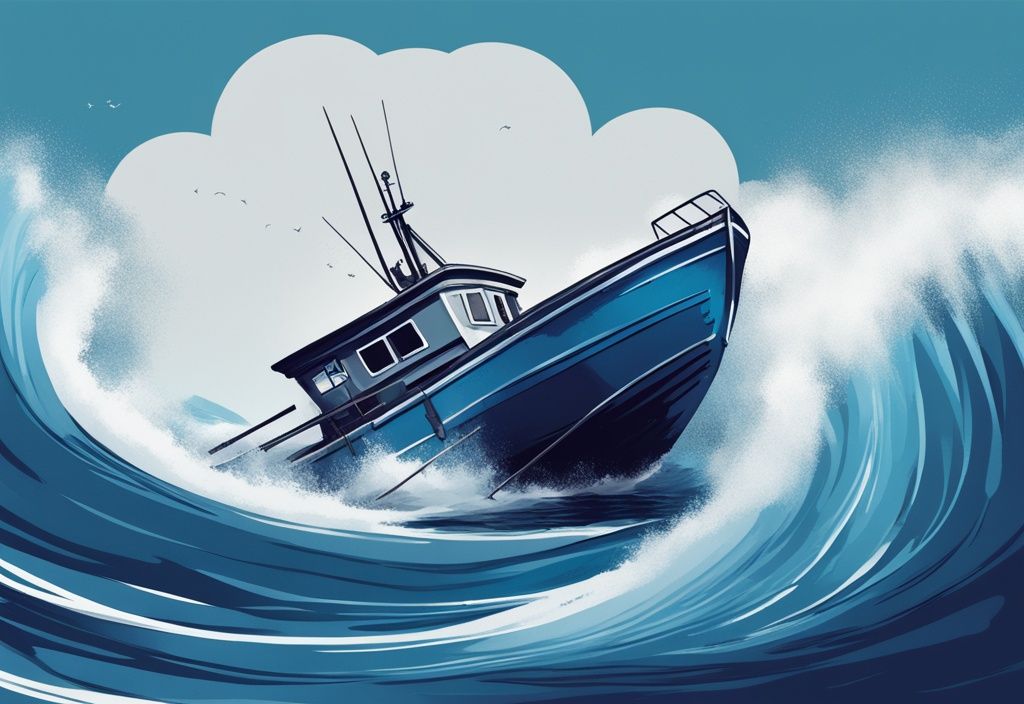
In summary, understanding when and how to safely use a stern anchor can prevent accidents and ensure smooth fishing trips. Always evaluate the conditions and equip the boat properly to counter the inherent risks associated with stern anchoring.
Conclusion
Anchoring your fishing boat from the stern poses significant dangers, primarily increasing the risk of flooding, capsizing, and loss of control. The stern of a boat is typically lower and more vulnerable to water ingress, especially in rough conditions or when faced with high waves.
Water can easily flood over the stern, which is not designed to handle such pressures, leading to rapid accumulation and destabilization of the boat. Once water starts entering the boat, the increased weight can make the vessel sit lower in the water, intensifying the flooding issue and potentially causing the boat to sink if not managed swiftly.
Stern anchoring also makes the boat prone to capsizing due to waves hitting it from the side, as the stern lacks the bow’s design to cut through incoming waves effectively. Loss of control is another critical issue when anchoring from the stern. Natural elements like wind and currents can affect the boat more drastically, causing it to swing broadside. This instability exposes the boat to even greater wave impact, increasing the risk of capsizing.
Moreover, the lack of proper stern anchoring hardware on many boats leads to operational problems, such as tangled rudders and damaged propellers, further compromising maneuverability and control. Safety concerns for passengers also arise when anchoring from the stern. The increased side-to-side rocking can cause seasickness and unstable footing, which heightens the risk of falls and injuries.
Additionally, the difficulty of rapid anchor retrieval in emergency situations poses significant hazards, as quickly lifting the anchor is crucial to avoid dangers like incoming storms or obstacles. Understanding these risks highlights the importance of bow anchoring for safety. Bow anchoring allows the boat to face incoming elements, ensuring better stability and control.
However, knowledgeable and cautious use of stern anchors can mitigate some risks but should be reserved for specific, controlled conditions such as calm, shallow waters or in conjunction with bow anchors for added stability.
In conclusion, while stern anchoring might be suitable for certain scenarios, it is essential to recognize the associated dangers and prioritize bow anchoring to ensure safety on the water.
FAQ
How to Prevent Swamping: Signs and Preventive Measures
Preventing swamping is crucial for safe boating. Always monitor wave conditions and avoid anchoring a fishing boat from the stern in rough waters. One tell-tale sign is the stern sitting too low or being open, which can invite water into the boat. Make sure your bilge pumps are in top-notch condition to handle any surprise water ingress. By keeping your stern high and dry and staying vigilant about weather conditions, you can significantly cut down the risk of swamping.
Is Stern Anchoring Ever Safe: The Truth
Stern anchoring can feel like second nature in calm conditions, but let’s be honest—it’s never a perfect substitute for bow anchoring. The right gear and precautions can make it safe enough for a lazy afternoon on placid waters, but in most scenarios, bow anchoring should be your go-to move. When it comes to safety, the bow wins out every time.
What to Do in a Flooding Emergency
If your boat starts flooding, don’t waste a second. Fire up those bilge pumps right away. If you can, swing the bow so it faces the oncoming waves, the most stable position you can get. Haul up the anchor and make a beeline for a safer spot. Your quick action can make the difference between a close call and a disaster.
Preparing Your Boat for Tough Anchoring Conditions
Your boat is only as good as its gear. Get yourself proper anchoring hardware and keep it in ship-shape. Regular checks on your bilge pumps and flotation devices are essential. And don’t forget to whip your crew and passengers into shape with emergency drills and safety protocols. Being prepared isn’t just smart; it’s a lifesaver.
Ideal Boat Designs for Stern Anchoring: An Overview
Certain boat designs handle stern anchoring better than others. Boats with higher, closed sterns are your best bet, as they can take on the waves more effectively. If you’re looking for even more stability, think about a dual anchoring system with both stern and bow anchors. For smaller, shallow draft boats that are favorites for fishing or diving, stern anchoring is fine—as long as the water is calm. Know your boat, and you’ll make smarter anchoring decisions every time.
